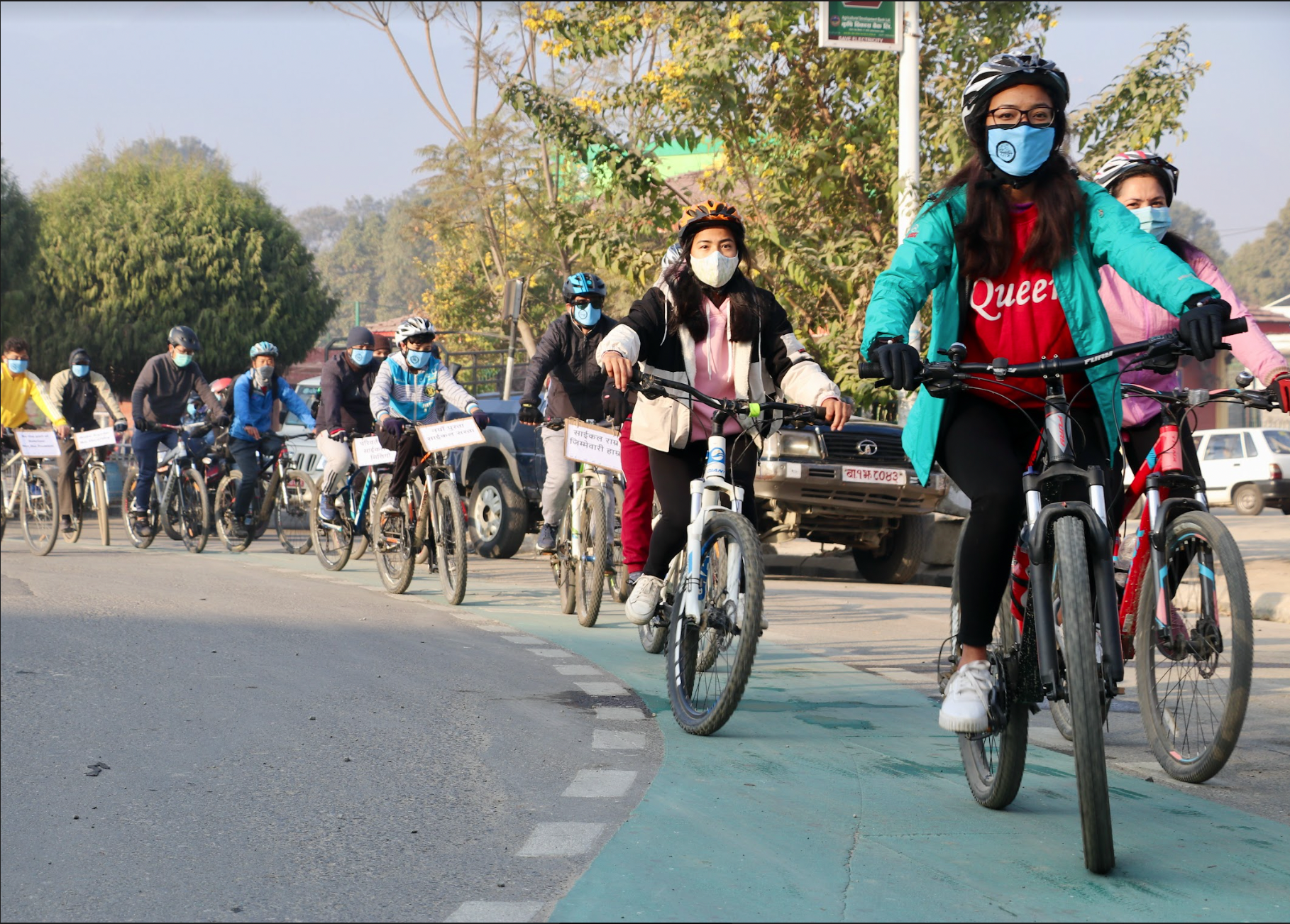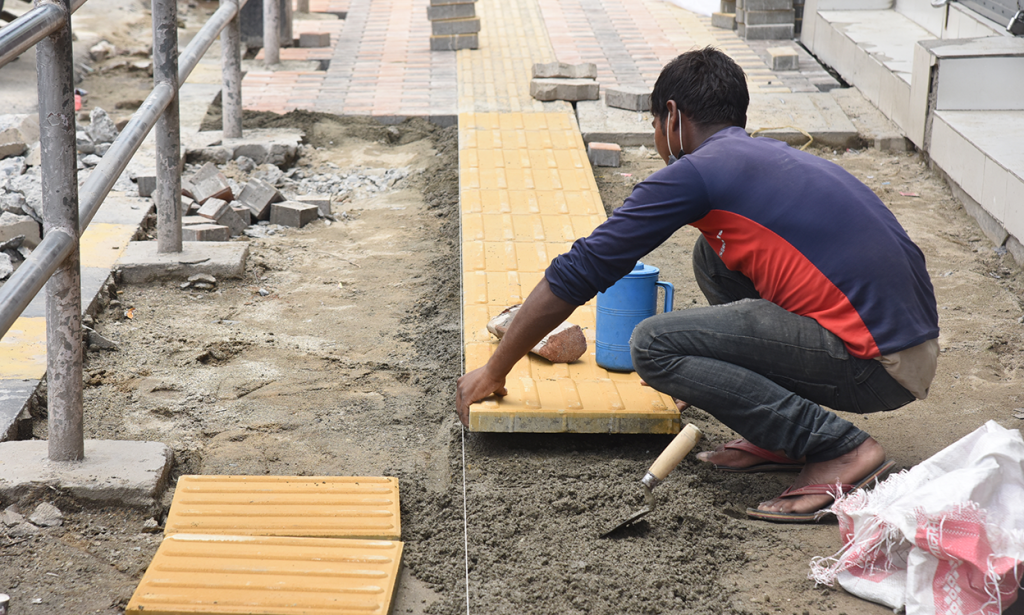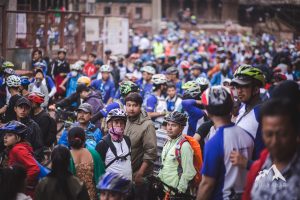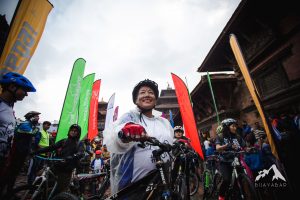It is said that how developed a city is can be seen by the number of cyclists there. Nepal’s capital, Kathmandu still has fewer bicycle riders, but the number is now rising. After the rise in the price of petroleum products, the number has increased, but Cycle City Network Nepal wants more as it wants to develop Kathmandu as a cycle city. For this, it has opted for many options including incentivising bicycle users in the city and across.
One of the recent facilities it has introduced for cyclists is a mobile app called Greenway that helps them make their riding experience not only easier and purposeful but also provides rewards that give you discounts on various goods and services.
What is the Greenway app?
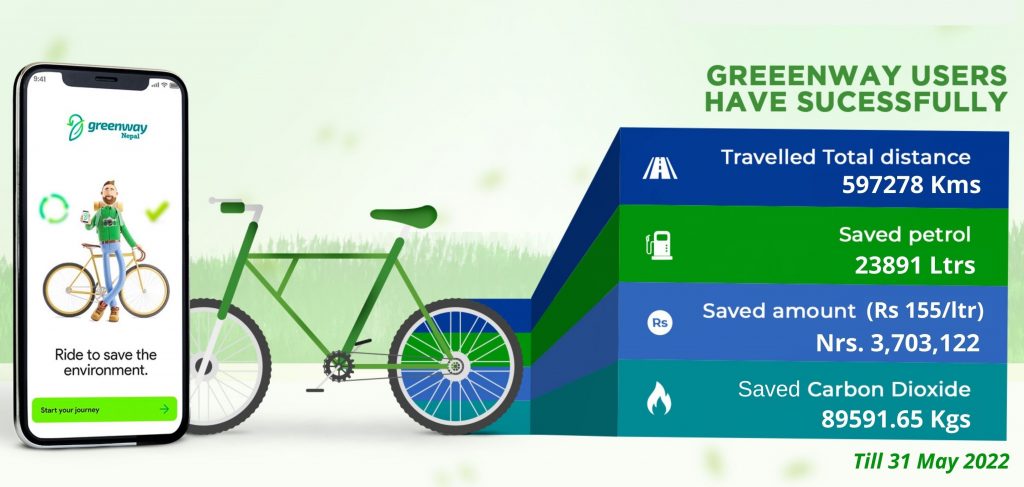
Greenway is a simple mobile-based application with the primary motive to create a digital platform that promotes a sustainable lifestyle.
The app is the result to seek a one-stop solution for all bicycle riders and environment enthusiasts. Its primary services include information about safe cycling routes, parking, in-app bicycle shops and amenities as well as a one-stop solution for sustainable and green solutions that people can choose. “We have collaborated with 50+ upcycling shops of clothes as well as agricultural and organic products,” informs Sailendra Dangol, the campaign manager for Greenway.
“Anyone can just connect with the app whether it is riding a bike or not. Our motive is to create a greener, more sustainable lifestyle where we are conscious about choices we make and the impact we leave behind, and in all that, Greenway is an app to facilitate you better.”
Dangol explains one of the key attractions of the app is to give an overall impact on the environment and their health. “When a rider uses the Greenway app, it tells them about their carbon footprint and how much did they save as well as the calories they burned while riding the bicycle with their app. We tally the data with petroleum use and its impact to make the numbers more relatable.”
The app also addresses 14 of the 17 SDGs, directly or indirectly, with a major interest in transport and mobility.
Incentivising rides
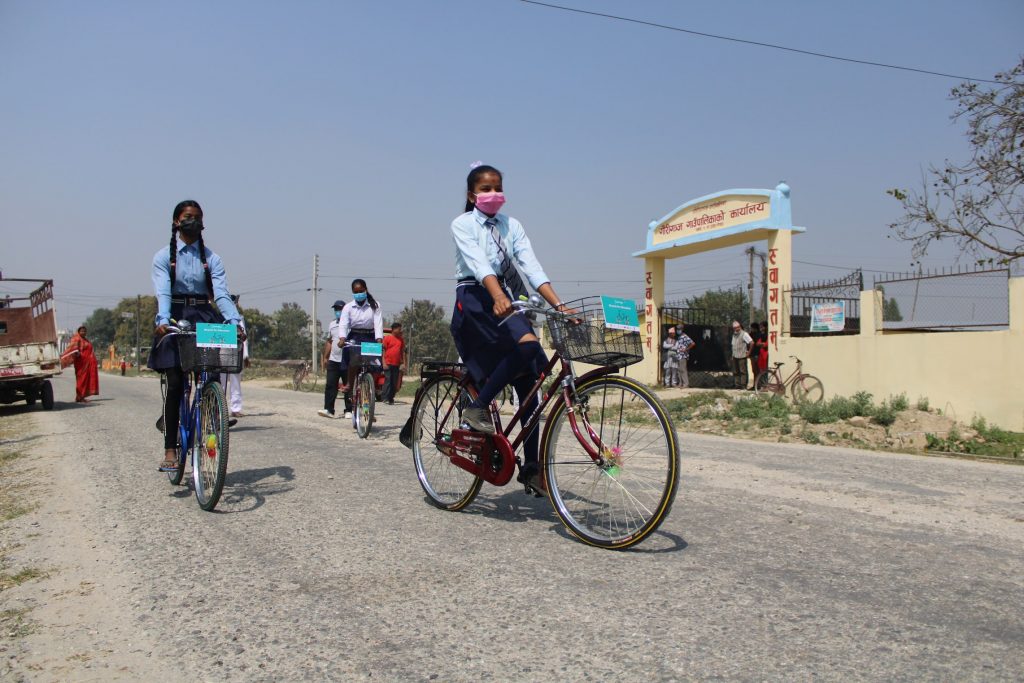
Their first way to pull the people to use the Greenway app was to incentivise them. In 2021, hence, the organisation started paying Rs 3 per km to all cyclists who connected with the app and that boosted their user engagement. Dangol says incentivising significantly increased the number of people who changed their behaviour to cycle to work or for other commutes. “Incentivising was possible with the support of UNDP and NCell.”
Now, the organisation has changed its approach and focused more on discounts. It means that inside Kathmandu, it has stopped giving out incentives. However, outside Kathmandu, it is also collaborating with more than 12 schools and locals so that the young population in the area can get offline rewards while riding their cycles to schools. There are people manually taking notes of the progress and the rewards of the children. The schools calculate their travelled km, offline, and cash reward of Rs 3 per km.
The Greenway app, however, still engages the users by giving them tasks, events or challenges that they complete and win rewards. The rewards include discounts on various goods and services that cyclists can redeem from Cycle City Network’s partners.
Moving forward, it wants to integrate a better user interaction platform. It will soon introduce bicycle renting and ride-sharing services too. “In this, with different docking stations across the cities, the riders through the app can rent the bike (if it is for more than 30 minutes) or share a ride (for up to 20 minutes) from one docking station to the next.”
But before that, it still needs to correct some basic educational aspects. “A big part of the education process is for them to educate the common people that cycle riders are not just the ones riding fancy bikes, there are more informal users who are on the road like vendors, delivery or pick-up persons for gas, water and even food.”
The green impact

Till Jan 2022, there are already 9,500 sustainable users of the Greenway app. They are not necessarily riders as the number also includes advocates of sustainable life choices.
Cycle City Network Nepal says it is through their advocacy that local authorities made bicycle lanes in many places. “Starting from Lalitpur, we have recently done the same at Tulsipur with a focus on the Bicycle Lane Act and implementation. Now, we are looking forward to expanding the app in Pokhara as well,” Dongol says.
There has not been formal research yet, but the observation and gathered data of concerned officials including Lalitpur City Police Chief Sitaram Hachethu say road rage and accidents involving cyclists have become less in areas where there are cycle lanes. Prior to this, the accidents were a result of rampant road construction and a lack of behavioural awareness regarding cycle lanes and cycle riders.
The Greenway app also tells them the safest route to take from point A to point B. “We are still trying to better the route education, with contributions from the app users who suggest the routes. In absence of cycle lanes, we can at least minimise threats of road accidents for the riders.”
The green way forward

Dangol says Cycle City Network Nepal is working in all six metropolitan cities in various SDG sections with a focus on access to education for girls. Under which they have donated cycles to girls in various schools for their commute between their school and home. This, he adds, also further asks them to make a commitment to reducing child marriage and providing basic education to all.
In Lalitpur Metropolitan City, they have made an act but it is yet to be implemented. In Tulsipur and Tilotamma too, the organisation is lobbying for the act. And they hope Greenway app data can give the legal procedures a strong base.
Their focus is also on reports and data, though they might not be directly applicable everywhere, he says, it is a learning reference and the authorities can adapt models and philosophies that suit them the best. The team has been continuing its advocacy for the same across various platforms.
Cycle lanes are one of the visible achievements of the movement. However, the question is if the people need cycle lanes everywhere, and this team has an alternative too.
“On roads and in areas that are less than 5 km and that are not that wide, we are adapting the concept of cycle boulevard, where the cycle lanes are not defined but acknowledged prominently. We are hoping to keep one section regarding cycle lanes in the syllabus for the licence test section,” he adds.
The organisation first started its operation in partnership with the Lalitpur metropolitan city. Because the previous leadership in Kathmandu was not cooperative enough, it had not been able to expand the idea in the capital city. However, now, it is hopeful with the new leadership.
But, for today, its focus is to get all riders participating in the annual Kora event happening today to use the app while they ride. “All riders will have to connect with Greenway and at the end of the event, we will create an impact table where we can see how much fossil fuels and the carbon footprint we have saved.”



